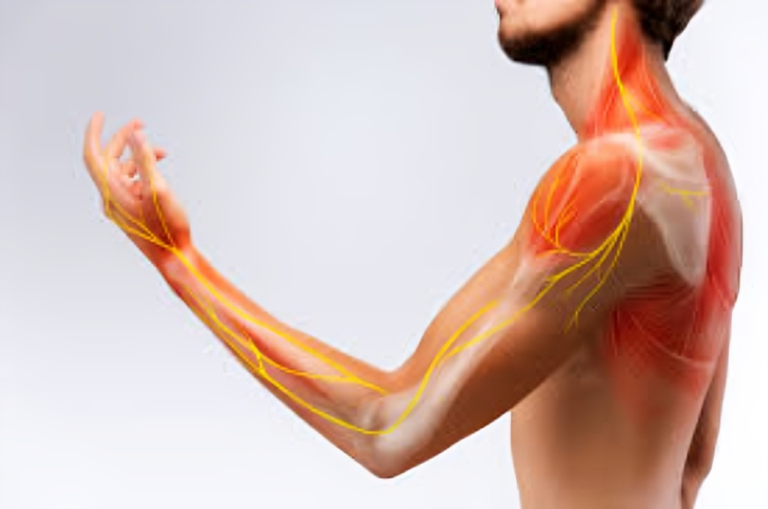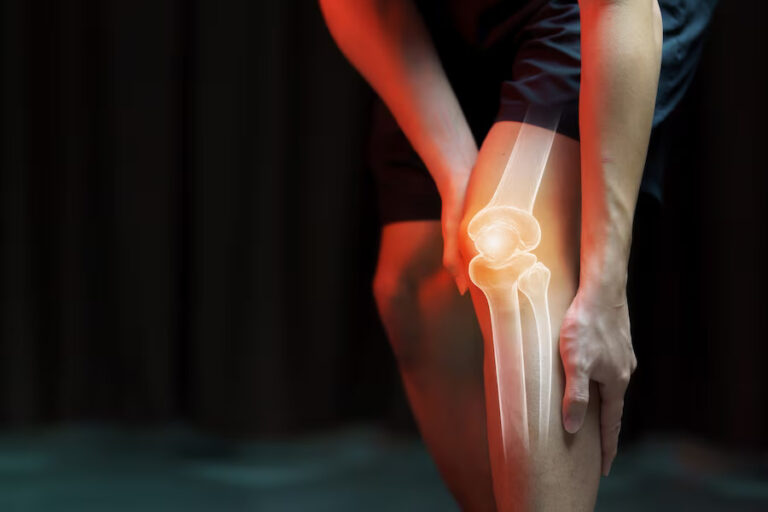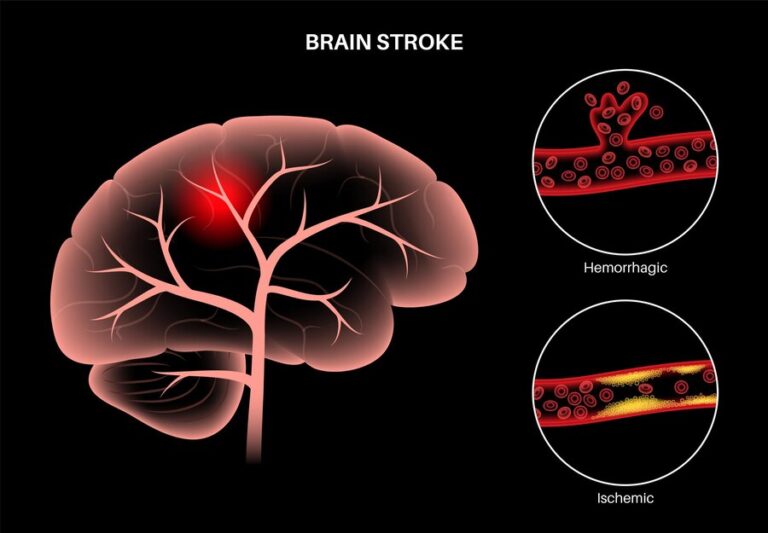Understanding and Managing Knee Pain: Causes, Symptoms, and Treatment Options.
Knee pain is a prevalent issue affecting people of all ages, often hindering mobility and reducing overall quality of life. The knee is a complex joint that plays a crucial role in supporting the body’s weight and facilitating movement. Various factors, including injuries, medical conditions, and lifestyle choices, can contribute to knee pain. This article aims to explore the causes, symptoms, and potential treatment options for knee pain.
To Know More About it Please Click Here
Causes of Knee Pain
- Injuries: a. Trauma: Accidents, falls, or sports-related injuries can lead to damage to the knee ligaments, tendons, or cartilage. b. Sprains and Strains: Overstretching or tearing of ligaments (sprains) and muscles or tendons (strains) can cause pain and discomfort.
- Medical Conditions: a. Arthritis: Osteoarthritis and rheumatoid arthritis are common culprits of knee pain, causing inflammation and deterioration of joint cartilage. b. Gout: The buildup of uric acid crystals in the knee joint can lead to sudden and intense pain. c. Bursitis: Inflammation of the bursae, fluid-filled sacs that cushion the knee joint, can cause pain and swelling.
- Overuse and Wear-and-Tear: a. Repetitive Strain: Activities that involve repetitive knee movements, such as running or jumping, can lead to overuse injuries. b. Age-Related Degeneration: As people age, the knee joint may experience wear and tear, contributing to pain and stiffness.
Symptoms of Knee Pain
- Pain: a. Sharp or Dull Pain: Depending on the cause, knee pain may manifest as a sharp, stabbing sensation or a dull, persistent ache. b. Location of Pain: The specific area of pain can provide clues about the underlying issue, such as anterior knee pain (in front), medial knee pain (inner side), or lateral knee pain (outer side).
- Swelling: a. Inflammation: Many knee conditions lead to swelling, caused by the accumulation of fluid in and around the joint.
- Stiffness: a. Reduced Range of Motion: Knee pain often comes with stiffness, limiting the ability to fully bend or straighten the knee.
Treatment Options
- Rest and Ice: a. Immediate Care: Resting the knee and applying ice can help reduce pain and swelling, especially after an injury.
- Physical Therapy: a. Strengthening Exercises: Targeted exercises can improve muscle strength and joint stability, reducing knee pain.
- Medications: a. Pain Relievers: Over-the-counter or prescription pain medications can provide relief. b. Anti-Inflammatory Drugs: Nonsteroidal anti-inflammatory drugs (NSAIDs) help reduce inflammation.
- Braces and Supports: a. Orthotic Devices: Customized braces or shoe inserts can provide support and alleviate pressure on the knee joint.
- Injections: a. Corticosteroid Injections: Injections into the knee joint can help reduce inflammation and pain.
- Surgery: a. Arthroscopy: Minimally invasive procedures may be used to diagnose and treat certain knee conditions. b. Joint Replacement: In severe cases of arthritis, joint replacement surgery may be recommended.
To Know More About it Please Click Here
Conclusion
Knee pain is a multifaceted issue with various causes and symptoms. Seeking timely medical attention, adopting a healthy lifestyle, and following appropriate treatment plans are crucial in managing knee pain effectively. By understanding the underlying factors contributing to knee discomfort, individuals can take proactive steps to improve their knee health and enhance their overall well-being.







